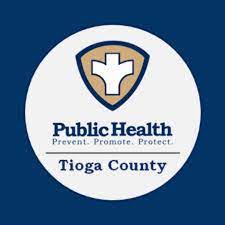Tioga County has seen an uptick in tick-borne illnesses this summer, particularly anaplasmosis and Lyme disease. According to reports from the Communicable Disease Electronic Surveillance System, Tioga County has already had 173 reports of Lyme disease, and 32 reports of anaplasmosis in 2023.
To compare, Tioga County had 210 reports of Lyme and 25 reports of anaplasmosis in 2022. However, it is important to keep in mind that ticks are most active from March to mid-May and mid-August to November, meaning there will likely be more reports made by the end of the year.
Lyme disease and anaplasmosis are bacterial infections transmitted to humans through the bite of infected blacklegged ticks, also known as deer ticks. Symptoms of both infections may include fever, chills, headache, fatigue, and muscle and joint pain. Lyme disease infections may also display a bull’s-eye rash.
Serious health complications can occur if Lyme or anaplasmosis is left untreated, so it is important to be alert if a tick bite occurs. Early treatment involves antibiotics and almost always results in a full recovery. However, the chances of a complete recovery decrease if treatment is delayed.
In today’s busy and demanding world, we do not have time for Lyme! Take these steps to protect against ticks.
Avoid grassy, brushy, or wooded areas with high leaves and grass. If you are out in these areas, wear long-sleeved, light-colored clothing, especially in highly wooded areas, and walk in the center of trails.
Treat boots, camping gear and clothing with products containing 0.5% permethrin. Permethrin is an insecticide in the pyrethroid family. Pyrethroids are synthetic chemicals that act like natural extracts from the chrysanthemum flower.
Use insect repellent that contains DEET, and is registered by the Environmental Protection Agency (EPA).
Examine pets, clothing and gear for ticks.
Carefully check your body for ticks and immediately shower after coming indoors.
If a tick has bitten you, remove it as soon as possible. Use fine-tipped tweezers to grasp the tick as close to the skin as possible. Pull upward with even, steady pressure. Do not twist or jerk, as this can cause the mouthparts of the tick to break off and remain in the skin.
After removal, clean the bite area with rubbing alcohol or soap and water. Lastly, dispose of the tick by placing it in alcohol or a sealed bag, wrapping it tightly in tape, or flushing it down the toilet.
Pick up your FREE Tick Removal Kit from your local Town or Village Hall in Tioga County. The tick removal kits include tweezers, an alcohol pad, band-aid, and an educational card on different tick-borne illnesses, directions on how to remove a tick, and more!
For more information, visit https://www.cdc.gov/ticks/tickbornediseases/index.html or “Like” Tioga County Public Health on Facebook.



Be the first to comment on "Uptick in Tick-borne Illnesses reported in Tioga County "